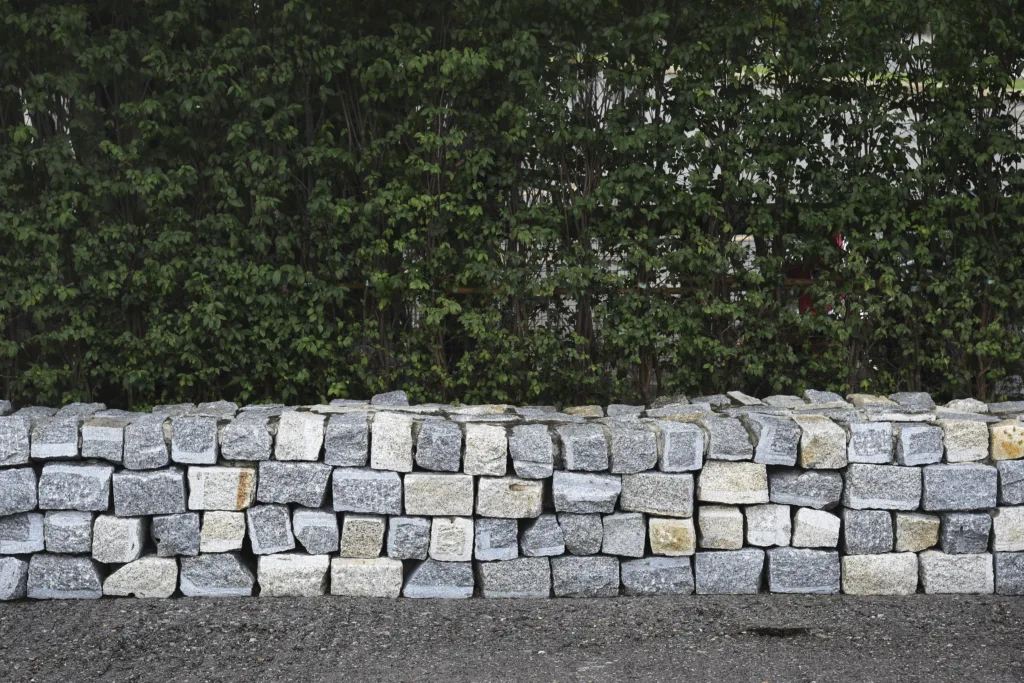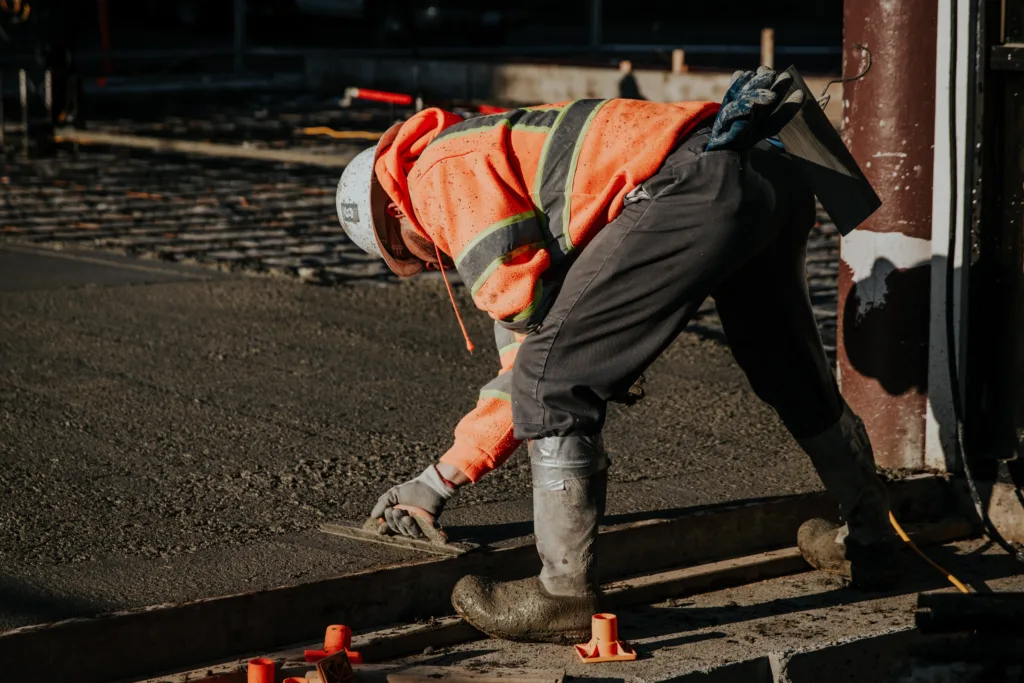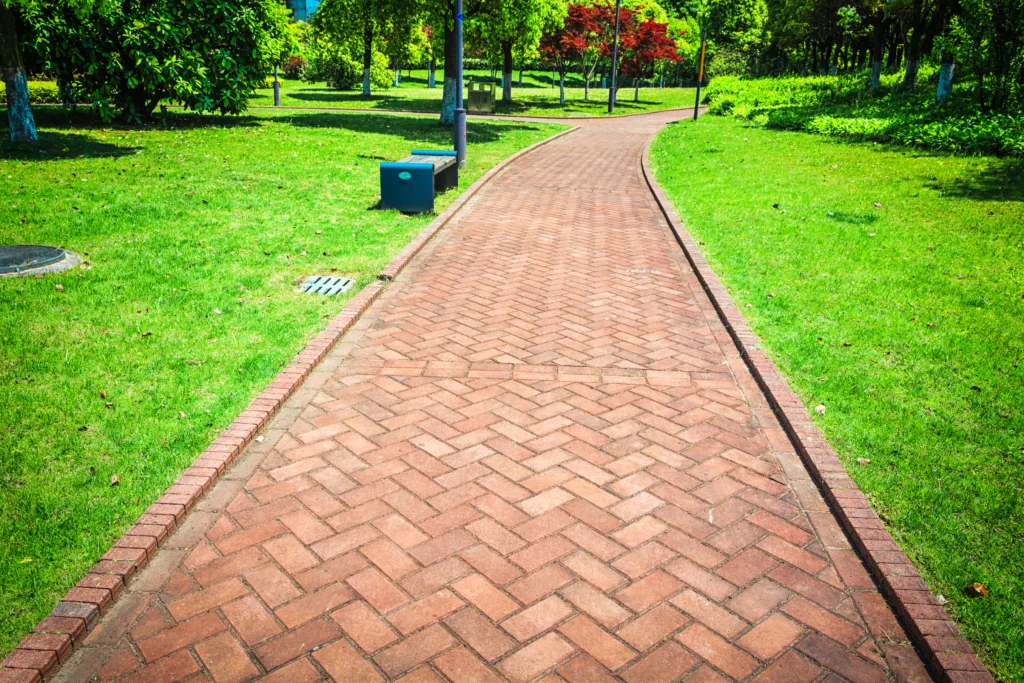Concrete paver edging is a popular and versatile option for enhancing your landscape in the Bay Area. Whether you have a residential or commercial property, concrete paver edging can provide a polished and professional look to your outdoor spaces. This guide will take you through everything you need to know about concrete paver edging, from what it is and the different options available, to installation, maintenance, and creative ways to enhance your landscape.

What Are Concrete Paver Edgings?
Concrete paver edgings are specially designed units made of concrete that are used to create a defined border or edge for various outdoor areas. They are available in a range of shapes, sizes, and colors, allowing you to customize the look to suit your style and landscape design. Concrete paver edgings not only add visual appeal but also serve practical purposes such as containing gravel or mulch, preventing the growth of weeds, and providing a barrier between different elements of your landscape.
Why Use Edging?
The significance of using edging around outdoor paved areas cannot be overstated. It serves as a crucial solution to a range of problems that can compromise the integrity and aesthetic appeal of pavements. Here’s why incorporating edging is essential:
- Prevents Movement and Spreading: Tiles and pavers are susceptible to displacement due to various factors, including weather extremities, vehicular and pedestrian traffic, and natural ground movements. Without a solid boundary, these elements can cause pavers to move and spread apart. Edging acts as a restraint, maintaining the alignment and position of the tiles, thereby preserving the original design and structure of the paved area.
- Stops the Snowball Effect of Damage: The absence of edging can initiate a destructive process similar to a snowball effect. Once a few pavers start to move or spread, it leads to further displacement, creating a chain reaction. This can result in tiles cracking, shifting, sinking, and the growth of weeds and moss between them, undermining the pavement’s stability and appearance.
- Aesthetic Maintenance: A well-defined edge enhances the visual appeal of gardens, driveways, and pathways. It delineates the boundaries, creating a clean and organized look that complements the overall landscape design. Edging ensures that the paved area remains visually appealing over time by preventing the unsightly spread of pavers.
- Cost-Effective: Investing in proper edging from the outset is cost-effective in the long run. It reduces the need for repairs and maintenance that would otherwise be necessary to correct issues caused by paver movement. By selecting the appropriate edging and installing it before laying bricks or tiles, homeowners can protect their investment, saving both money and effort on future repairs.
- Enhances Durability: Edging provides a physical barrier that enhances the durability of the paved area. It supports the pavers, distributing weight evenly and reducing the risk of damage under load. This is particularly important in areas subject to heavy foot or vehicle traffic.
Paver edging is not just necessary; it’s indispensable for maintaining the structural integrity, aesthetic appeal, and longevity of outdoor paved areas. By framing pathways, patios, and drives with the correct perimeter edge restraint, homeowners can create stunning visual landscapes that are both durable and maintenance-friendly, safeguarding their investment for years to come.
Types of Concrete Paver Edging Options

There are several types of concrete paver edging options to choose from, each offering unique features and benefits. Here are the types of concrete paver edging options:
1. Plastic Edging
Plastic edging is made from durable, flexible plastics like PVC. It’s lightweight and often comes in strips or rolls. Best for garden beds, pathways, or areas where you need to create smooth curves.
2. Metal Edging (Aluminum or Steel)
Plastic edging is made from durable, flexible plastics like PVC. It’s lightweight and often comes in strips or rolls. Best for garden beds, pathways, or areas where you need to create smooth curves.
3. Concrete Edging
This is a precast or poured concrete that forms a solid border around paver areas. Perfect for large, formal areas like patios or driveways where a substantial, permanent edge is desired.
4. Brick Edging
Brick edging involves the use of bricks, either laid flat or on end, to create a border. Great for traditional garden paths, flower beds, and areas where aesthetics are a priority.
5. Natural Stone Edging
This edging uses natural stones like flagstone, limestone, or slate, either in their natural shape or cut. Best for natural-style landscaping, rock gardens, and areas where a rustic look is desired.
6. Wood Edging
Typically made from treated lumber, logs, or timber, wood edging offers a natural look. Suitable for garden beds, paths, and areas where a natural, rustic look is preferred.
7. Composite Edging
Composite edging is made from a mixture of recycled wood and plastic. Ideal for environmentally conscious landscaping and for those who want the look of wood without maintenance.
8. Rubber Edging
Made from recycled rubber, like old tires, this edging is flexible and eco-friendly. Good for playground areas, garden beds, and places where safety and flexibility are key considerations.
Each type of edging serves a specific purpose and can greatly enhance the functionality and aesthetics of your landscaping project. The choice depends on the specific needs, style preferences, and environmental conditions of your space.
Step-by-Step Guide to Installing Concrete Paver Edging
Installing concrete paver edging requires careful planning and execution. Here is a step-by-step guide to help you through the process:
1. Dig a Trench
Use a shovel or a trenching tool to dig a trench along the marked line. The depth of the trench should be equal to the height of the concrete paver edging plus an additional inch for a stable base.
2. Add a Base Layer
Fill the trench with a layer of compacted gravel or crushed stone to create a stable base for the edging. Use a tamper to ensure the base is level and firmly packed.
3. Lay the Edging
Place the concrete paver edging units into the trench, making sure they fit snugly against each other. Use a rubber mallet to tap the edging units into place, ensuring they are level and aligned.
4. Secure the Edging
Once all the edging units are in place, use landscaping spikes or stakes to secure them to the ground. Place the spikes or stakes at regular intervals along the length of the edging, driving them into the ground until they are firmly anchored.
5. Backfill and Compact
Fill the trench behind the edging with soil or gravel, and compact it using a tamper. This will provide additional stability and prevent the edging from shifting or moving.
6. Finish the Edging
Use a broom or brush to remove any excess soil or debris from the surface of the edging. This will give it a clean and finished appearance.
Maintaining and Caring for Your Concrete Paver Edging

To ensure the longevity and beauty of your concrete paver edging, regular maintenance and care are necessary. Here are some tips to keep in mind:
- Regular Cleaning: Sweep or blow away dirt, debris, and leaves to prevent organic buildup and keep the edging neat.
- Weed Control: Regularly check for and promptly remove weeds, either manually or with weed killer, to prevent spread and damage.
- Sealing: Apply a sealant to protect against stains, moisture, and weathering, following the manufacturer’s guidelines for application and reapplication.
- Repairing Damages: Address any cracks or damage quickly. Use concrete crack filler for small issues and consider replacing sections for larger damages.
Creative Ways to Enhance Your Landscape with Concrete Paver Edging

Concrete paver edging offers endless possibilities for enhancing your landscape and adding unique touches to your outdoor spaces. Here are some creative ideas to inspire you:
- Pathway Borders: Use concrete paver edging to create defined borders for pathways or walkways. This will not only improve the aesthetics but also help guide visitors and prevent them from straying off the designated path.
- Garden Beds: Create raised garden beds using concrete paver edging. The edging will provide a clean and structured border, allowing you to separate different plants or flower beds. You can also use the edging to create tiered garden beds for added visual interest.
- Water Features: Incorporate concrete paver edging into your water features, such as ponds or fountains. The edging can be used to create a border around the water feature, adding a polished and finished look to the overall design.
- Outdoor Seating Areas: Define outdoor seating areas using concrete paver edging. This will create a distinct space for relaxation or entertainment and can be further enhanced with additional landscaping elements such as seating walls or planters.
Conclusion
Concrete paver edging is a versatile and practical option for enhancing your landscape in the Bay Area. From creating defined borders to preventing weed growth, it offers numerous benefits for both residential and commercial properties. By selecting the right type of concrete paver edging, properly preparing the area, and following the installation and maintenance guidelines, you can enjoy a beautiful and functional landscape for years to come.
So, why wait? Contact Rhino Concrete Bay Area today to explore the possibilities of concrete paver edging and transform your outdoor spaces, for a free consultation and estimate for your concrete paver edging project. Let our team of experts help you enhance your landscape with professional and high-quality concrete edging solutions.







